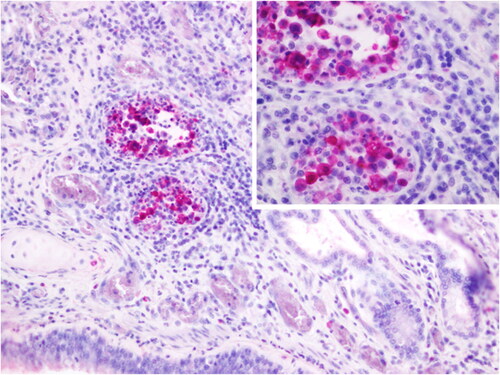Figures & data
Figure 1. Statistical process control chart of Otaria flavescens strandings by month was collected from January 2009 to June 2023 (Illustrated from January 2020). the red arrow depicts January 2023 where the stranded surpasses the upper control limits.
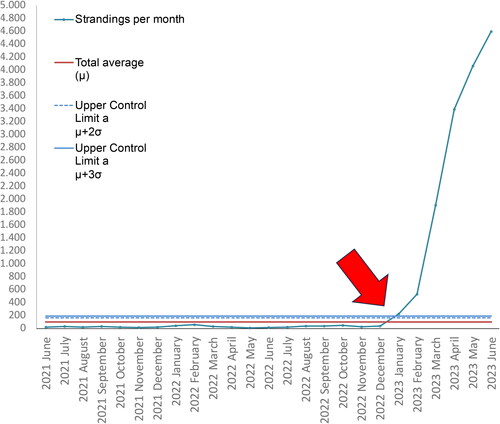
Figure 2. Column graph showcasing the frequency of stranded Otaria flavescens (South American sea lion) throughout the year 2023 by month.
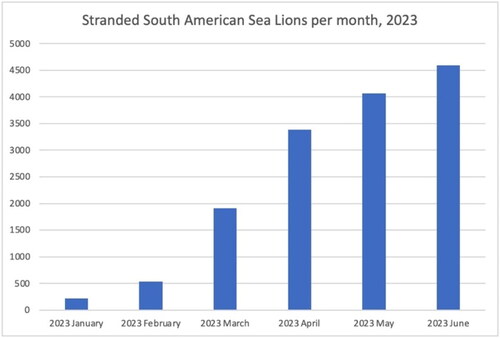
Table 1. Table of South American sea lion Strands until June 30, 2023, Chile.
Figure 3. Spatial distribution and the high-risk cluster of influenza virus (IV) positive and negative samples from O. flavescens in Chile. A National situation of HPAIV, showing positive and negative samples (red and blue dots respectively) and high-risk spatial clusters for O. flavescens (light purple circles), and high-risk spatial clusters from wild bird outbreak in Chile (light brown circle). B overlaying high-risk significant HPAIV from wild birds and O. flavescens located in northern Chile. C proximity between statistically significant high-risk HPAIV spatial clusters for wild birds and positive cases of HPAIV in O. flavescens in coastal areas of central Chile.

Figure 4. A. Brain. Male South American (SA) sea lion (245513). severe multifocal to locally extensive areas of non-suppurative encephalitis and hemorrhages. H&E, 10×. B. Brain. Male South American (SA) sea lion (245513). neuronal and glial necrosis with associated neuronophagia and gliosis. H&E, 40×. C. Brain. Male SA sea lion (245513). Intralesional positive immunostaining. IHC against Influenza A nucleoprotein in neurons and glial cells, IHC against Influenza A nucleoprotein, 40×. D. Arbor vitae of the cerebellum. Female sea lion (245719). Intralesional positive immunostaining. IHC against Influenza A nucleoprotein, 10×.
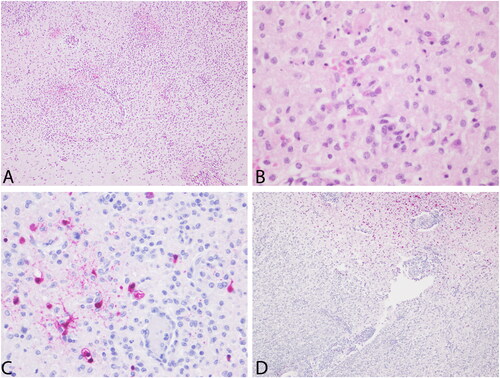
Figure 5. The Otaria flavescens (South American sea lion) adult female necropsied. The animal tested positive for the HPAI H5N1 virus. The SA sea lion displayed a prominent wasting syndrome, characterized by inadequate body condition and muscular weakness, with notably pronounced ribs reflecting its poor physical state.
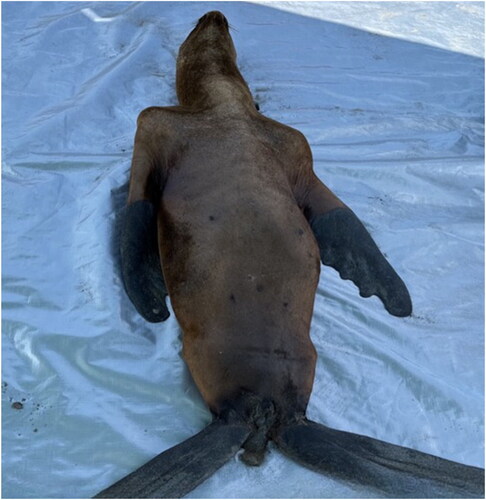
Figure 6. Lung. Male sea lion (245513). intranuclear and intracytoplasmic staining for Influenza A nucleoprotein in peribronchial inflammatory cells and cell debris in peri-bronchial glandular area. IHC against Influenza A nucleoprotein, 20×. Inset: magnification of the positive immunostaining. 60×.
